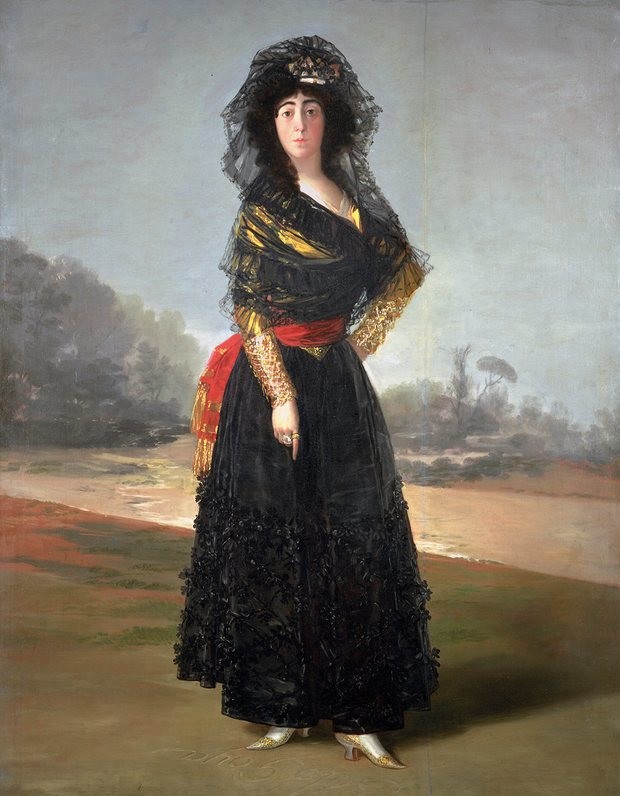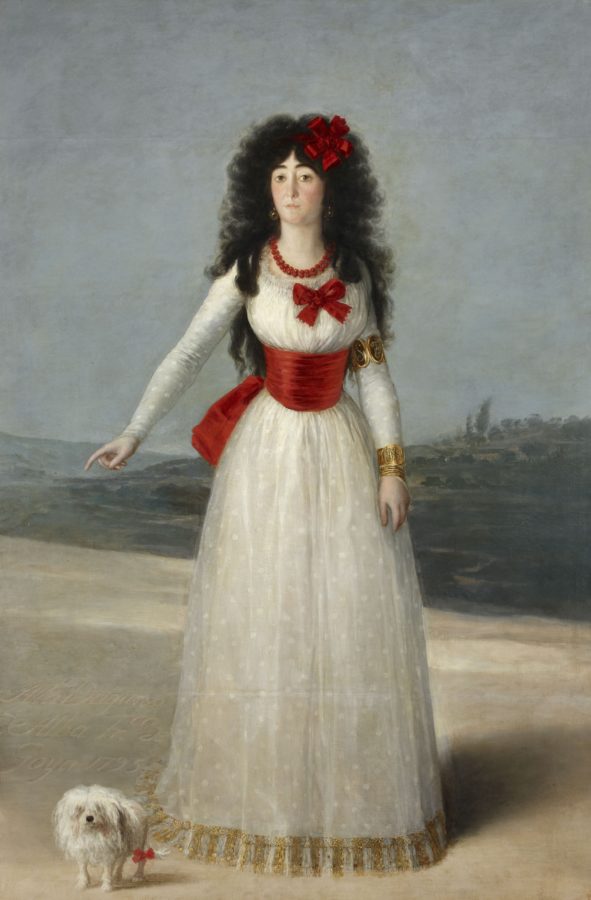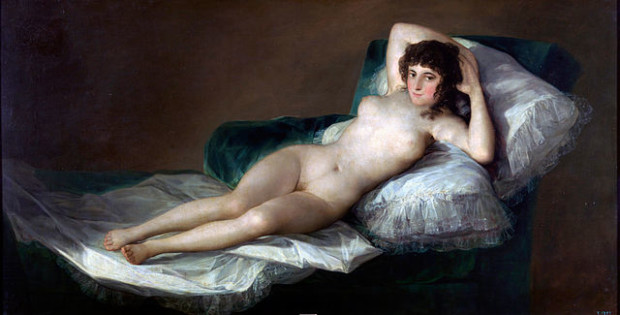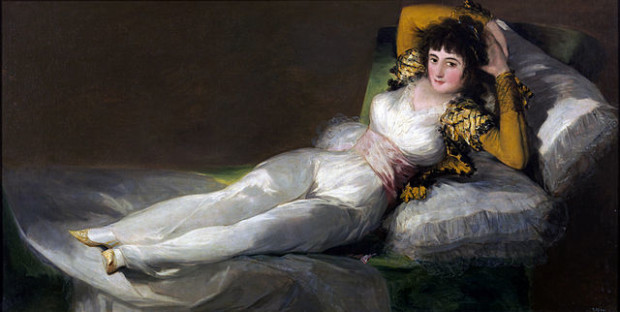Polish Art Nouveau Genius – Stanisław Wyspiański
Likened by his 19th century Polish compatriots to a modern Leonardo da Vinci, Stanisław Wyspiański’s talents encompassed more than just the...
Pola Otterstein 11 April 2024
Few women in 18th-century Spain captured the imagination of contemporaries as thoroughly as Doña María de Pilar Teresa Cayetana de Silva Álvarez de Toledo (1762-1802), XIII Duchess of Alba in her own right.
We can spot her in numerous paintings created by Francisco de Goya. Especially from the two in which she is lying fully dressed and on the other – fully naked.
The relationship between her and Goya was thought to be one of the most romantic love affairs in the history of Spanish art. Although the liaison between the rough Francisco de Goya and the beautiful, capricious Duchess of Alba, the grandest grandee in Spain, has now been described as a legend it is still a very interesting story.
For example, in one of the formal portraits of the Duchess, she wears two rings, bearing the names Alba and Goya, and points to the artist’s signature at her feet.

The description says “Solo Goya” – “only Goya”.
The couple met when the Duchess was a teenager, and they came to know each other well. Goya made many visits to her palaces to paint. In 1739, her husband, the Duke, died aged 39. Then she became the wealthiest woman in Spain. 34-year-old Alba radiantly beautiful and at the peak of her social success retired to the family estate in Sanlucar de Barrameda, near Cadiz, and invited Goya. Goya was fifty, deaf, married, and still not fully recovered from his debilitating illness of 1792.

He stayed from July 1797 until the following March and produced his most intimate portraits of his patron – taking siestas cuddling her adopted black daughter and teasing her maid. Two years later, the “Majas” appeared.
The Duchess clearly charmed Goya during one of their earliest encounters, at which she asked the artist to apply her makeup. Goya wrote in a letter, “The Alba woman, who yesterday came to the studio to make me paint her face, and she got her way; I certainly enjoy it more than painting on canvas, and I still have to do a full-length portrait of her”.
The painting, considered scandalous by Spanish society of the time, depicts a fully nude reclining woman. It is the first example of female pubic hair in painting, but many consider the clothed version even more erotic. Her face is not that of the Duchess, but the body bears close comparison to the delicate curves in the other painting. It, together with a companion piece depicting the same model clothed, La Maja Vestida; was commissioned by Spanish Prime Minister Manuel de Godoy (the known lover of Spain’s queen, María Luisa).

The true identity of the Majas is uncertain. Many art historians over the years have rejected the possibility that the painting depicts the Duchess, but the gossips remain. Those scholars believe that the painting depicts either Godoy’s young mistress or an idealized composite of several different models.
The Duchess died under somewhat mysterious circumstances in July 1802 at the age of 40. Although her death was ostensibly due to tuberculosis and a fever, more colorful scenarios have been suggested over the years, among them a theory that she was poisoned.

In the end, we can share the full name of the Duchess – are you ready?
It’s:
Doña María del Pilar Teresa Cayetana de Silva Álvarez de Toledo y Silva Bazán, décimo tercera duquesa de Alba de Tormes, décima primera duquesa de Huéscar, sexta duquesa de Montoro, octava condesa-duquesa de Olivares, décimo primera marquesa del Carpio, décimo tercera marquesa de Coria, novena marquesa de Eliche, décimo segunda marquesa de Villanueva del Río, sexta marquesa de Tarazona, marquesa de Flechilla y Jarandilla, décimo primera condesa de Monterrey, décimo cuarta condesa de Lerín, décimo tercera condesa de Oropesa, décimo cuarta Condestablesa de Navarra, décimo segunda condesa de Galve, décimo cuarta condesa de Osorno, de jure duquesa de Galisteo, décimo primera condesa de Ayala, novena condesa de Fuentes de Valdepero, condesa de Alcaudete, condesa de Deleitosa, señora del estado de Valdecorneja, señora de las baronías de Dicastillo, San Martín, Curton y Guissens.
True story. I wonder if she remembered all these names!
DailyArt Magazine needs your support. Every contribution, however big or small, is very valuable for our future. Thanks to it, we will be able to sustain and grow the Magazine. Thank you for your help!